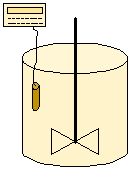MINERAL PROCESSING WEB APPLICATIONS: REAGENT DOSAGE AND CHEMISTRY
By using these tools and documents on this website, you agree to the disclaimer and End User License Agreement section. |
Reagents addition calculations: Knowing and adding the correct amount of reagents is critical in metallurgy. In plant operations, the throughput changes with time, consequently, the reagent flow rate (L/min) should correspond to the desired dosage rate (grams of reagent per tonne of ore). The same principle applies to laboratory batch tests where the volume of reagent solution (mL) added should achieve the target dosage rate (g/t). Watch a Youtube video example. Oxygen demand: The oxygen demand rate and dissolved oxygen concentrations are linked with the mineralogy, process water as well as the sulphide minerals (or media) surface oxidation. While various procedures were proposed in the literature since 1974, all of them measure the dissolved oxygen concentration in the slurry, and record its decay. This tool calculates the slurry oxygen demand rate from the exponential decay formula: DOt = DO0 . exp(-kt) Where: DOt is the dissolved oxygen concentration at time t (i.e., DO0 at time 0) and k describes the decay rate or oxygen demand rate. Calculation of EDTA extractable ions: In the absence of laboratory surface analysis instrument such as XPS, EDTA extraction techniques are used in the mineral processing industry to quantitatively assess the degree of sulphide minerals/grinding media oxidation. These techniques are well establised in the literature and consist of leaching a slurry sample in a 3% EDTA solution at pH 7.5 and a 10% volume ratio. |
© Copyright metallurgical.app
